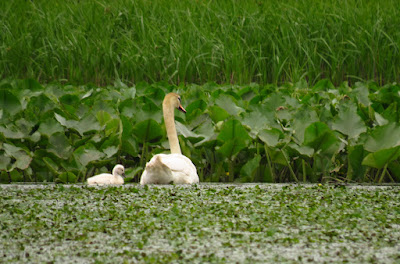"Where are we going?"
"I dunno."
A few minutes later, "Where are we going?"
"I dunno."
It has been about 6 months since S was in the canoe. I know that exactly where we are going isn't all that important. The fact that we are going is, it is everything. We load up and head east, where the good waters are.
We set out from the North Cove of Pettipaug. The tide is falling and part way down, but it is rather ordinary tide and there is plenty of water to pass through the gap and out into the big river. At the gap are a pair of Snowy Egrets. I aim us straight across the river, because the opposite shore is the better.
"There's an Eagle," says I, the eagle-eyed canoe guy.
"Where?"
"See the tall dead tree behind the sandy beach? About ten feet to the right."
It becomes nothing, then it becomes and Eagle again, then nothing, and then an Eagle. As we near the beach, it turns out to be nothing.
"But that Eagle is pretty cool," as I point out a very large Eagle coming from an entirely different direction. It is one of the Lord Cove Eagles, probably the female, which is quite large from prior sightings at the nest, which is only a half mile away by air.
But mostly, it is a sleepy, warm day. We head back into Hamburg cove up as far as the town itself. As we stretch our legs, it begins to cloud over. They might be rain clouds later, but they're still building and I don't see them as anything but a convenient shield from the sun. With that, we head back out, crossing the upstream end of Brockway Island to the west bank, and then follow that back to the North Cove. S is ready for ice cream.

































